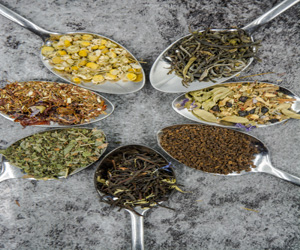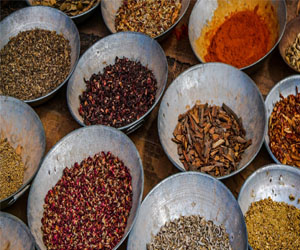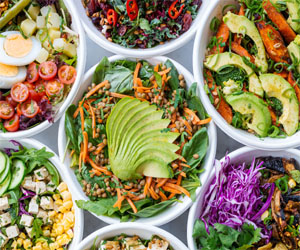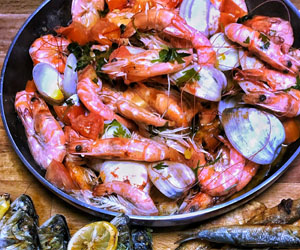


The Crucial Alchemy Behind Perfect Coffee

Coffee, the beloved elixir of millions, undergoes a remarkable transformation during the roasting process. Roasting coffee beans is the critical step where the flavors, aromas, and nuances we adore are born. The art of roasting techniques is an intricate dance that blends science, precision, and a touch of alchemy, turning green coffee beans into the aromatic and flavorful beans we grind for our morning brew.
The Art Of Roasting
Roasting coffee is not a mere cooking process; it's a carefully calibrated art form. It begins with the selection of green coffee beans, where bean origin, variety, and processing method are all significant factors. These beans, though green, already carry a unique set of flavors that the roaster must coax out during the roasting process.
The Roasting Machine
Roasting coffee demands specialized equipment known as a coffee roaster. These machines come in various sizes and configurations, from small batch roasters for artisanal micro-roasters to large industrial roasters for mass production. These roasters are equipped with advanced controls to monitor temperature, airflow, and other variables.
The Roasting Process
Drying Phase: The roasting process begins with the drying phase. In this initial stage, the green coffee beans lose moisture and begin to change color from green to yellow. The beans become more brittle, and a grassy smell is often noted.
First Crack: As the roasting temperature continues to rise, the beans undergo a significant change known as the first crack. This is the point at which the beans audibly crack, similar to popcorn. The sugars in the beans begin to caramelize, leading to the development of flavors and the release of carbon dioxide.
Development Phase: After the first crack, the beans enter the development phase. Here, the roaster must closely monitor the roast profile to achieve the desired flavor and aroma. Roasting times and temperatures are adjusted to balance acidity, body, and aroma.
Second Crack (Optional): Some beans go through a second crack, which is a deeper level of caramelization. The beans become darker, oils may emerge, and the flavors intensify. However, not all coffee beans go through a second crack, as it depends on the desired roast level.
Cooling Phase: The roasting process ends with the cooling phase, where the hot beans are rapidly cooled to prevent further roasting. This step is crucial to locking in the flavor and aroma profile developed during the roast.
The Roast Levels
Roasting techniques give birth to various roast levels, each offering distinct flavors and aromas:
Light Roast: Light roasts showcase the bean's origin, highlighting its unique flavor. These roasts have a brighter acidity, a lighter body, and often floral or fruity notes.
Medium Roast: A medium roast strikes a balance between bean origin and roasting, offering a well-rounded flavor profile with a moderate acidity, body, and a blend of flavors.
Dark Roast: Dark roasts bring out smoky, roasted flavors and a deeper body. They often have a more pronounced bitterness and less acidity.
Espresso Roast: Espresso roasts are typically medium to dark, specifically tailored to extract well in espresso machines. They offer a balanced flavor with a fuller body.
Craftsmanship And Expertise
Roasting techniques are a testament to the craftsmanship of the coffee roaster. It requires a deep understanding of the beans, an acute sense of smell and taste, and the ability to interpret data from the roasting machine. Every roast is a unique expression, and the roaster's role is to guide the beans to their full potential.
Roasting techniques are the alchemical transformation that turns green coffee beans into the aromatic, flavorful, and beloved beans that fill our cups. The art of roasting embodies the marriage of science and intuition, and it is the unsung hero behind the coffee we savor and cherish every day. Whether you prefer a light, medium, or dark roast, each cup of coffee tells a story of meticulous roasting that enhances the unique qualities of the beans, taking us on a sensory journey with every sip.
Transforming Your Life For The Better
 Lifestyle change is a concept that holds the potential to redefine our well-being, relationships, and overall quality of life. It involves a deliberate and conscious shift in one's habits, behaviors, and choices, often with the aim of improving health, happiness, and fulfillment. Whether you're seeking to overcome challenges, enhance your personal development, or simply find a better path in life, lifestyle change is a powerful tool to help you accomplish these goals.
Lifestyle change is a concept that holds the potential to redefine our well-being, relationships, and overall quality of life. It involves a deliberate and conscious shift in one's habits, behaviors, and choices, often with the aim of improving health, happiness, and fulfillment. Whether you're seeking to overcome challenges, enhance your personal development, or simply find a better path in life, lifestyle change is a powerful tool to help you accomplish these goals.
The Catalyst For Change
Lifestyle change often begins with a catalyst, a moment of realization that prompts you to reevaluate your current situation. It could be a health scare, a feeling of stagnation, or a desire for greater self-fulfillment. Whatever the trigger, it serves as a powerful motivation to embark on a journey of transformation.
Setting Clear Goals
The first step in making a lifestyle change is setting clear and realistic goals. Whether your focus is on health, career, relationships, or personal growth, defining what you want to achieve is essential. These goals provide a sense of direction and purpose, making it easier to stay on course during the change process.
 Flavor And Culinary Versatility
Flavor And Culinary Versatility
Natural ingredients infuse dishes with the vibrant flavors and aromas that no artificial additives can mimic. Fresh herbs, spices, and produce can elevate a simple meal into a culinary masterpiece. The versatility of these ingredients is unparalleled; they can be used to create a wide array of dishes that cater to various tastes and dietary preferences, from vegan to omnivorous.
Environmental Stewardship
Choosing natural ingredients is not only beneficial for your health but also for the environment. These ingredients are cultivated with minimal synthetic pesticides and fertilizers, reducing the carbon footprint of your diet. Moreover, supporting sustainable farming practices helps preserve biodiversity, conserve natural resources, and mitigate soil and water pollution. By opting for natural, organic, and locally sourced ingredients, you play a crucial role in the global movement towards sustainable agriculture and food systems.
More Than A Caffeine Fix
 In Italy, coffee culture is synonymous with the espresso, a concentrated shot of liquid gold that Italians consume multiple times a day. The espresso bar, or "caffe," is not just a place to get a quick caffeine fix; it's a social hub where people gather to chat, argue, and take a moment to savor life.
In Italy, coffee culture is synonymous with the espresso, a concentrated shot of liquid gold that Italians consume multiple times a day. The espresso bar, or "caffe," is not just a place to get a quick caffeine fix; it's a social hub where people gather to chat, argue, and take a moment to savor life.
In the Middle East, coffee culture revolves around the intricate art of brewing and serving Turkish coffee. This finely ground, strong brew is not merely a pick-me-up; it's a gesture of hospitality and a symbol of cultural identity. The brewing process itself is a mesmerizing dance of tradition and ceremony.
Scandinavia, on the other hand, has redefined coffee culture with its embrace of the minimalist and Scandinavian concept of "hygge." Scandinavian cafes are known for their clean lines, cozy atmospheres, and a focus on quality over quantity. They take the time to appreciate the simple pleasure of a well-brewed cup.
The specialty coffee movement in the United States has revolutionized coffee culture, elevating it to a level of precision and craftsmanship previously unseen. Coffee lovers have become connoisseurs, scrutinizing everything from bean origin and roast level to brewing methods and latte art. It's a culture that values transparency and the connection between farmers, roasters, and baristas.
In Australia, the flat white is the king of coffee culture. This creamy, velvety espresso-based drink has a devoted following. Coffee shops down under are known for their emphasis on quality milk and the importance of a silky microfoam.
Nature's Flavorful Treasures
 Health Benefits: Beyond their culinary appeal, aromatic herbs offer an array of health benefits. They are often rich in antioxidants, vitamins, and minerals. For instance, basil contains essential nutrients like vitamin K and iron, which promote bone health and support overall well-being. Rosemary is known for its anti-inflammatory properties and its potential to enhance memory and concentration. Mint aids in digestion and alleviates symptoms of indigestion and irritable bowel syndrome. The list of health benefits associated with aromatic herbs is extensive, making them an integral part of a balanced diet.
Health Benefits: Beyond their culinary appeal, aromatic herbs offer an array of health benefits. They are often rich in antioxidants, vitamins, and minerals. For instance, basil contains essential nutrients like vitamin K and iron, which promote bone health and support overall well-being. Rosemary is known for its anti-inflammatory properties and its potential to enhance memory and concentration. Mint aids in digestion and alleviates symptoms of indigestion and irritable bowel syndrome. The list of health benefits associated with aromatic herbs is extensive, making them an integral part of a balanced diet.
Aromatherapy: Aromatic herbs are not confined to the kitchen; they have a role to play in aromatherapy as well. Essential oils extracted from these herbs are used for their therapeutic properties, promoting relaxation, stress relief, and overall emotional well-being. Lavender, for example, is known for its calming scent, often used to induce sleep and reduce anxiety. Peppermint essential oil is employed to alleviate headaches and soothe muscle pain. Aromatherapy with aromatic herbs is a holistic approach to wellness that harnesses the power of nature's fragrant treasures.
Cultural Significance: Aromatic herbs hold cultural significance in various regions. In Mediterranean cuisine, oregano, thyme, and basil are omnipresent, enhancing the flavors of dishes like pizza and pasta. In Indian cooking, coriander and curry leaves are essential for curries and spice blends. In Thai cuisine, lemongrass, basil, and cilantro are iconic herbs that contribute to the vibrant and complex flavors of the dishes.
A Key To Health And Enjoyment
 Preventing Dietary Deficiencies: A monotonous diet that lacks variety can lead to nutritional deficiencies. For instance, relying solely on a narrow selection of foods may result in inadequate intake of specific nutrients like vitamin C, calcium, or fiber. Over time, such deficiencies can contribute to health problems. By diversifying your diet, you reduce the risk of missing out on these critical nutrients.
Preventing Dietary Deficiencies: A monotonous diet that lacks variety can lead to nutritional deficiencies. For instance, relying solely on a narrow selection of foods may result in inadequate intake of specific nutrients like vitamin C, calcium, or fiber. Over time, such deficiencies can contribute to health problems. By diversifying your diet, you reduce the risk of missing out on these critical nutrients.
Enhancing Taste And Satisfaction: Food variety doesn't just benefit your health; it also elevates your culinary experience. A diet rich in diverse flavors and textures can make every meal a delightful adventure. Savoring different foods stimulates your taste buds and keeps meals exciting and enjoyable. It can prevent food boredom and discourage overindulgence in less nutritious, but more familiar, options.
Cultural Exploration: Exploring a variety of foods exposes you to different culinary traditions and cultural practices. This exploration can be a delicious way to learn about diverse cultures, fostering a deeper appreciation for the richness and diversity of the world. It also encourages an understanding of the importance of cultural food heritage.
Diverse Nutritional Profiles: Different foods have different nutritional profiles. For instance, leafy greens provide a wealth of vitamins and minerals, while whole grains offer fiber and sustained energy. Lean proteins like fish and poultry are rich in essential amino acids. By incorporating all of these into your diet, you ensure a holistic approach to nutrition that supports all aspects of health.
 3. Slow Cooking: Slow cooking is a hallmark of Mediterranean cuisine. Stews and braised dishes are prepared with patience and love, allowing flavors to meld together harmoniously. Iconic dishes like Italian Osso Buco, Greek stifado, and Moroccan tagine exemplify the art of slow cooking.
3. Slow Cooking: Slow cooking is a hallmark of Mediterranean cuisine. Stews and braised dishes are prepared with patience and love, allowing flavors to meld together harmoniously. Iconic dishes like Italian Osso Buco, Greek stifado, and Moroccan tagine exemplify the art of slow cooking.
4. Seasoning With Fresh Herbs: Mediterranean cooking methods emphasize the use of fresh herbs like basil, oregano, thyme, and rosemary. These herbs not only infuse dishes with an aromatic depth but also contribute to the health benefits of the Mediterranean diet.
5. Baking And Gratin: Baking is prevalent in Mediterranean cooking, especially for making bread and pastries. Flatbreads like pita and focaccia are baked to perfection. Gratin dishes, like the famous Greek moussaka, are layered with ingredients and baked to create a golden, bubbling delight.